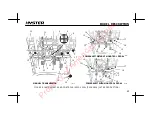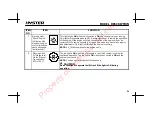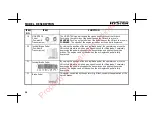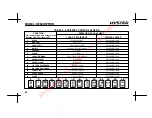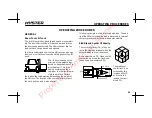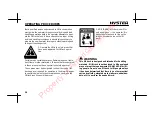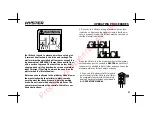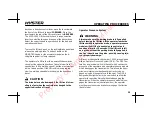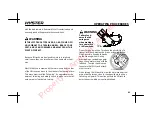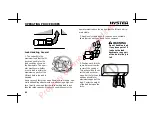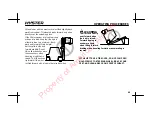
OPERATING PROCEDURES
31
The load center of a load is determined by the location of
its center of gravity. The load center is measured from the
front face of the forks, or the load face of an attachment, to
the center of gravity of the load. Both the vertical and hori-
zontal load centers are specified on the Nameplate.
For carriages or attachments that can be sideshifted, the
Nameplate specifies capacities in the “Centered” and
“Sideshifted” conditions. Capacities listed under “Cen-
tered” on the Nameplate apply when transporting loads
that are centered on the centerline of the lift truck. Capaci-
ties listed under “Sideshifted” on the Nameplate apply if
loads are transported that are not centered on the center-
line of the lift truck. Loads should be transported while
centered on the centerline of the lift truck.
The operator must know whether or not a load is within the
maximum capacity of the lift truck before the load is han-
dled.
INSPECTION BEFORE OPERATION
Checks With the Engine Stopped
Inspect the lift truck before use and every eight hours or
daily as described in the MAINTENANCE section of this
OPERATING MANUAL
.
Before using the lift truck, make the following checks:
•
Fuel level (if the lift truck has a diesel engine, drain
water from the primary filter).
•
Electrolyte level of the battery (unless maintenance
free).
•
Oil level in the engine and hydraulic tank.
•
Coolant level in the cooling system and condition of the
drive belts.
•
Condition of the radiator. Clean if necessary.
•
Condition of forks, carriage, chains, mast, attachment
and overhead guard.
•
Leaks from the engine, transmission, hydraulic system
and fuel system.
Property of American Airlines

